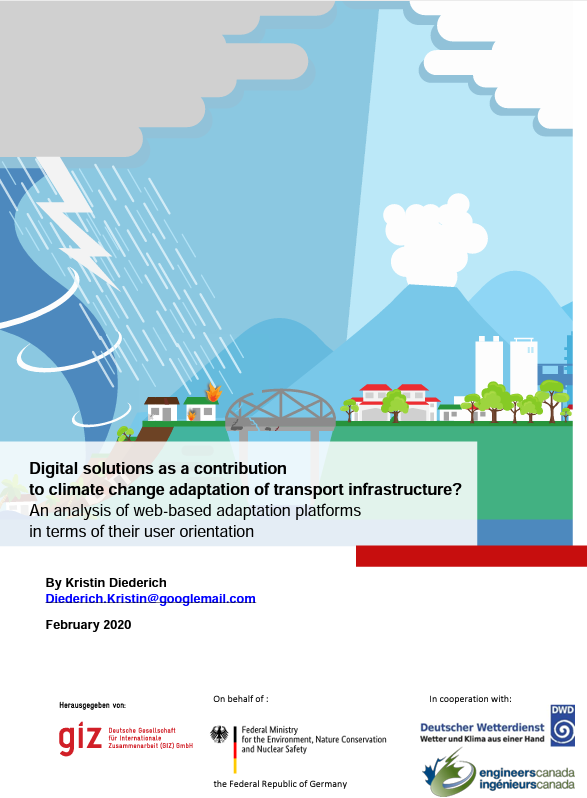Article /
Digital Solutions as a Contribution to Climate Change Adaptation of Transport Infrastructure? An Analysis of Web-based Adaptation Platforms in Terms of their User Orientation

Executive Summary
This resource was submitted by the Climate Risk Institute for use by the CanAdapt Climate Change Adaptation Community of Practice.
This article is an abridged version of the original text, which can be downloaded from the right-hand column. Please access the original text for more detail, research purposes, full references, or to quote text.
Climate change is one of the most urgent future facing issues politicians and scientists are currently In addition to mitigating the causes, the aim is also to adapt to the expected and often unavoidable consequences of climate change. Especially, for the supp in areas of life that build the foundation ly of a society and the growth of a country’s economy (e.g. the road sector), it is crucial to provide effective decision support in climate change adaptation. Against the background of the digital age, so called Climate Service User Interfaces are becoming increasingly important. Climate Services comprise the creation, translation, dissemination and use of climate data and information and are offered in a wide range of formats. Climate Service User Interfaces in the form of web adaptation platforms create based e virtual spaces that bridge geographical distances between actors from different countries and continents in the field of climate change and promote the exchange of knowledge about adaptation options.
For evidence-based adaptation decisions, the identification of correspondingly effective measures and thus the success of an adaptation platform, a close process of coordination, a so production, between user needs and provider capacities is essential called co. But how does the global landscape of web-based adaptation platforms take the principle of concurrently look like? To what extent do adaptation production into account? Which elements of an adaptation platform contribute to the specific needs of the user? And what is the fundamental role of d solutions in climate change adaptation in specific sectors, such as the road sector digital ? To answer these questions, the study examines and analyses the global landscape of web platforms and takes a critical look at their functionality. In addition, elements based adaptation, which needs and provider capacities, consider user are identified and recorded in a catalog of criteria. A subsequent validation of these results within a specific sector (here: road sector) completes the analysis. The study aims t o support future providers in the development of Climate Service User Interfaces.
Suggested Citation: Diederich, K. (2020, February). Digital solutions as a contribution to climate change adaptation of transport infrastructure? An analysis of web-based adaptation platforms in terms of their user orientation. Deutsche Gesellschaft für Internationale Zusammenarbeit (GIZ). https://climate-resilient-infrastructure.com/wp-content/uploads/2020_GIZ_CSI_Diederich_Digital_solutions.pdf
Related weADAPT Reading:
- Digitalization of the built environment: Towards a more sustainable construction sector
- Our Valuable Voices: Community Digital Storytelling for Good Programming and Policy Engagement
- Building a Climate-Resilient City: Transportation infrastructure
- Transport Toolkit: Developing strategies for clean, efficient transport
- Transport Sector Climate Change Adaptation Guidance Note
